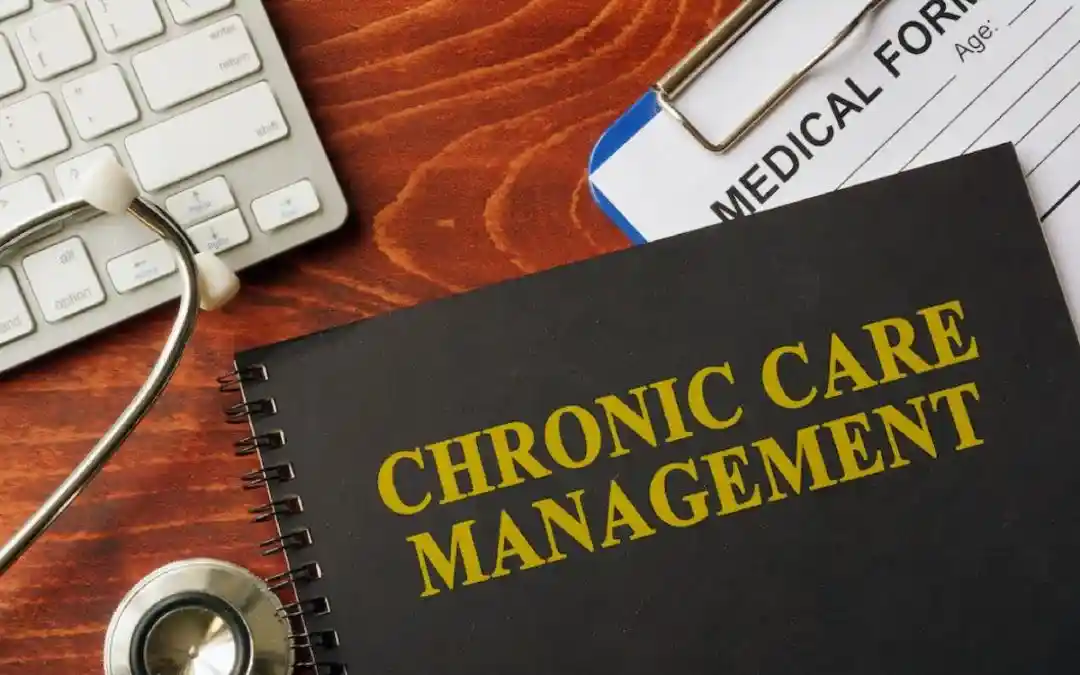Since 2015, Chronic Care Management (CCM) has been officially recognized by the Centers for Medicare and Medicaid Services (CMS) as a reimbursable model for treating patients with chronic conditions outside of the clinical office setting.
In the years since, some of the details and reimbursement amounts have changed, especially as the CCM becomes more closely integrated with CMS’ Connected Care campaign. And the use of CCM has grown steadily, with more and more providers embracing the official CMS CCM program as an effective model for care (and potential revenue stream) that’s often coupled with remote patient monitoring (RPM), to treat patients virtually.
But what is chronic care management, in a practical sense? And why should leaders, administrators, and health care providers embrace the CCM treatment protocol as a way to more effectively treat patients with chronic disease while reducing expenses and improving clinical outcomes?
Looking for chronic care management codes or billing requirements? Get the latest CCM codes here.
What is Chronic Care Management (CCM)?
As defined by CMS — which sets the average reimbursements amounts in its yearly Physician Fee Schedule — chronic care management is one of four types of care management models. These are:
- Behavioral Health Integration, which expands behavioral health coverage
- Advance Care Planning, or reimbursement for end-of-life planning sessions
- Transitional Care Management, or coverage for the 30-day post-discharge period of care transitions
- Chronic Care Management, which covers the ongoing treatment of patients with two or more chronic illnesses
Specifically designed to cover patient care that happens outside of the traditional clinical office setting, CCM covers services such as creating a comprehensive care plan and then managing that plan. This includes prescribing applicable medications, care coordination services, and maintaining regular communications (including regular office visits, which can be conducted remotely or virtually).
Patients must have at least two chronic conditions to qualify for CCM. These are long-term illnesses that last from a year until the end of life, requiring active management and coordination. There are many different types of chronic disease, including cancer, chronic obstructive pulmonary disease (COPD), heart disease/cardiovascular disease, hypertension, diabetes, stroke, Alzheimer’s disease, chronic kidney disease, hyperlipidemia and many more. You can get more info on the different types of chronic conditions here.
These medical conditions aren’t just deadly but costly to the United States healthcare system, with just heart disease and stroke combined leading to $216 billion in spending each year per the Centers for Disease Control and Prevention (CDC). With that understood, the motivation for preventing their acute exacerbation is clear enough. With that in mind, let’s take a look at how the CCM model of chronic disease management works.
Chronic care management reimbursement details
In terms of CMS reimbursement, the latest CPT® Codes for CCM reimburse care coordination of patient services for multiple chronic conditions. This also includes coverage of the patient’s psychosocial needs and activities of daily life.
Chronic Care Management is considered an Evaluation & Management (E&M) service, and can therefore be billed only by doctors and qualified healthcare professionals (QHPs) like a clinical nurse specialist, nurse practitioner or physician assistant. In addition to primary care physicians, CCM is managed by specialists like cardiologists, oncologists and pulmonologists. However, it should be noted that only one healthcare provider may receive reimbursement per code for a given patient.
As defined by the individual CCM reimbursement codes — G0506, 99490, 99491, 99489 and 99487 — this care breaks down into assessment and care planning sessions. Qualified health care providers can bill for the first 20 minutes and additional 20 minutes of clinical time (with a max of 60 minutes PPPM), or the first 30 minutes and additional 60 minutes PPPM for complex care. You can find more details, including average CCM reimbursement amounts, here.
How chronic care management can be used with RPM
In the years since 2015, CMS has modified the reimbursement guidelines and amounts for chronic care management to reflect changes in the availabilty and effectiveness of at-home care (a.k.a., telehealth), especially with the onset of Covid-19. For instance, a notable revision was made in 2020 to capture additional time for care beyond the mandated 20- and 30-minute segments (99439).
In 2019, CMS also introduced CPT codes for remote patient monitoring (RPM). Also known as remote physiological monitoring, RPM is designed to allow for reimbursement for the remote management of conditions that are often associated with chronic care, such as the continuous monitoring of vital signs. Like CCM, RPM codes have been expanded during the Covid-19 pandemic.
Need a primer on telehealth terminology? Don’t miss: Defining Remote Patient Monitoring, Telehealth & Other Key Terms in Digital Health
As such, some experts have advocated “coupling” RPM and CCM services in a way that takes full advantage of the reimbursement potential of both. And some enterprising providers have been doing just that, integrating CCM and RPM services to allow for new revenue streams for the care for chronic conditions. You can find an overview of the 2022 RPM codes here.
Yet whether the focus is CCM, RPM or both, there are more opportunities today than ever before to create an effective strategy to manage patients and populations. And because CCM is clearly defined by CMS with established, well-considered protocols and routines, leaders as well as clinical processionals are better equipped to provide not only premium care for patients, but also stake out new sources of revenue by adhering to chronic care management reimbursement codes.
Looking for help understanding how to use chronic care management in your organization?
If your organization is looking for ways to take advantage of new CCM reimbursement for chronic care management, we may be able to help! Contact us here to connect to a CareSimple specialist.
If you’re looking for details on the specific CPT Codes for CCM, RPM, RTM, and others, we encourage you to download our handy Reimbursement Tree for a convenient and up-to-date one-page summary.
